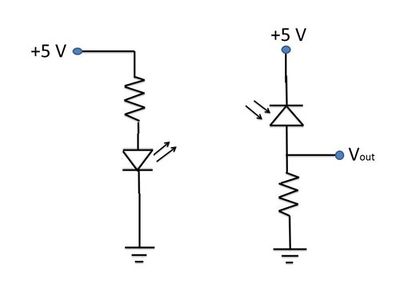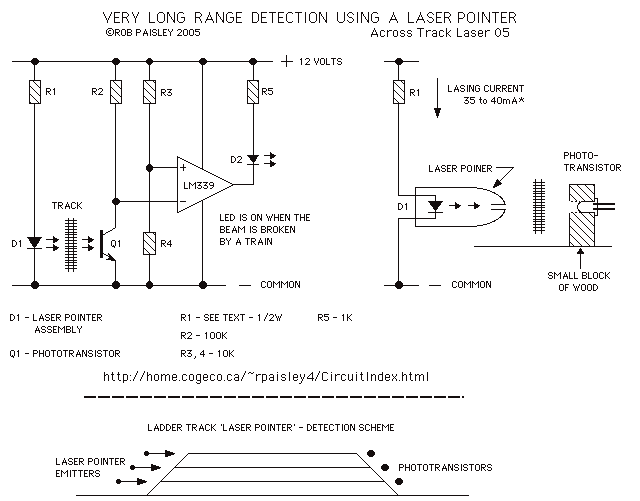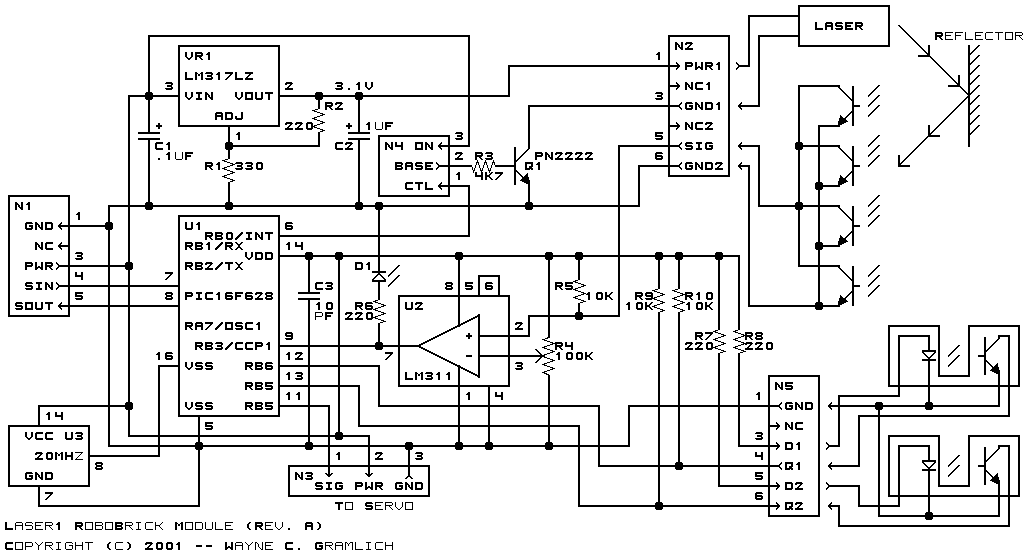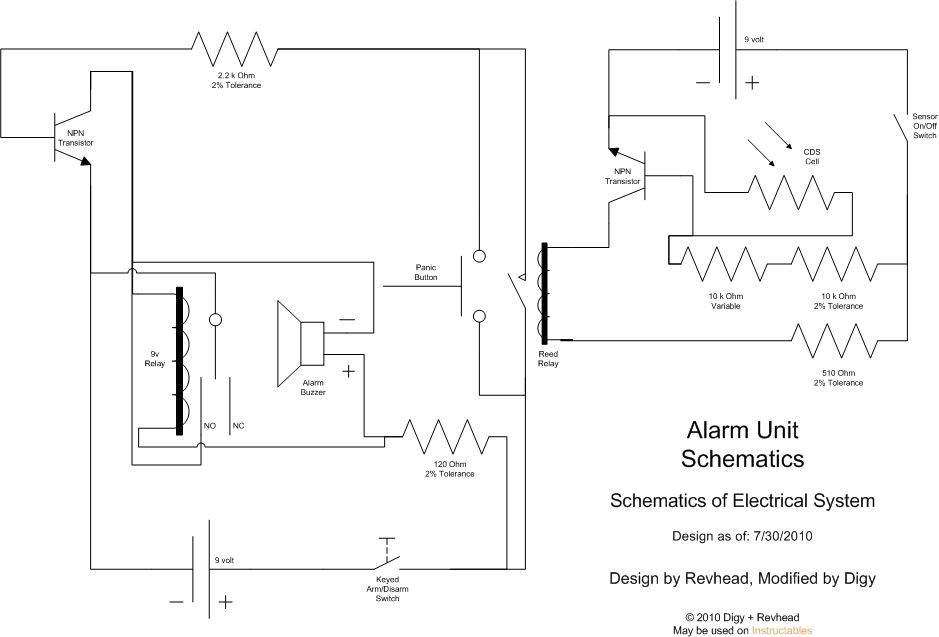
LASER Transmitter/Receiver
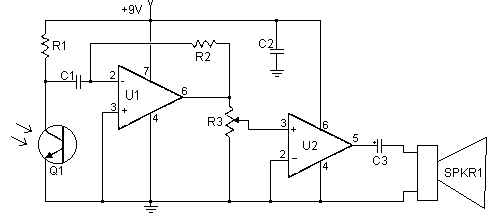
This set of two circuits forms the basis for a very simple light wave transmitter. A LASER beam is modulated and then aimed at a receiver that demodulates the signal and then presents the information (voice, data, etc.). The whole thing is very easy to build and requires no specialized parts except for the LASER itself. In the transmitter schematic, no ballast resistor is shown because most small LASER power supplies already have one built in. Yours may differ, and a resistor may be needed. The receiver should be kept away from bright lights.
The circuit consists of two main components: a transmitter and a receiver. The transmitter utilizes a LASER diode, which serves as the primary light source. The modulation of the LASER beam can be achieved using a simple circuit that may include a microcontroller or an audio amplifier to encode the desired information (such as voice or data) into the light signal.
For the transmitter, a power supply is required to operate the LASER diode. While many small LASER power supplies come with an integrated ballast resistor to limit the current flowing through the LASER, it is crucial to verify the specifications of the power supply being used. If it lacks a ballast resistor, an external resistor must be added to prevent damage to the LASER diode due to excessive current.
The receiver circuit is designed to detect the modulated LASER light and convert it back into an electrical signal. This typically involves using a photodiode or a phototransistor, which is sensitive to the wavelength of the LASER light. The output from the photodetector will be a varying electrical signal corresponding to the modulation applied at the transmitter.
In order to ensure optimal performance, the receiver should be shielded from ambient light sources, particularly bright lights that could interfere with the detection of the LASER signal. This can be achieved by placing the receiver in a dark enclosure or using optical filters that only allow the specific wavelength of the LASER light to pass through.
Overall, this simple light wave transmitter and receiver circuit can effectively transmit and receive data over short distances, making it a practical solution for various applications. Careful consideration of the components and environmental factors will enhance the reliability and performance of the system.This set of two circuits from the basis for a very simple light wave transmitter. A LASER beam is modulated and then aimed at a receiver that demodulates the signal and then presents the information (voice, data, etc..). The whole thing is very easy to build and requires no specialized parts execpt for the LASER itself. In the transmitter schematic, no ballast resistor is shown because most small LASER power supplies already have one built in. Yours may differ, and a resistor may be needed. The receiver should be kept away from bright lights. You may want to put a pi 🔗 External reference
The circuit consists of two main components: a transmitter and a receiver. The transmitter utilizes a LASER diode, which serves as the primary light source. The modulation of the LASER beam can be achieved using a simple circuit that may include a microcontroller or an audio amplifier to encode the desired information (such as voice or data) into the light signal.
For the transmitter, a power supply is required to operate the LASER diode. While many small LASER power supplies come with an integrated ballast resistor to limit the current flowing through the LASER, it is crucial to verify the specifications of the power supply being used. If it lacks a ballast resistor, an external resistor must be added to prevent damage to the LASER diode due to excessive current.
The receiver circuit is designed to detect the modulated LASER light and convert it back into an electrical signal. This typically involves using a photodiode or a phototransistor, which is sensitive to the wavelength of the LASER light. The output from the photodetector will be a varying electrical signal corresponding to the modulation applied at the transmitter.
In order to ensure optimal performance, the receiver should be shielded from ambient light sources, particularly bright lights that could interfere with the detection of the LASER signal. This can be achieved by placing the receiver in a dark enclosure or using optical filters that only allow the specific wavelength of the LASER light to pass through.
Overall, this simple light wave transmitter and receiver circuit can effectively transmit and receive data over short distances, making it a practical solution for various applications. Careful consideration of the components and environmental factors will enhance the reliability and performance of the system.This set of two circuits from the basis for a very simple light wave transmitter. A LASER beam is modulated and then aimed at a receiver that demodulates the signal and then presents the information (voice, data, etc..). The whole thing is very easy to build and requires no specialized parts execpt for the LASER itself. In the transmitter schematic, no ballast resistor is shown because most small LASER power supplies already have one built in. Yours may differ, and a resistor may be needed. The receiver should be kept away from bright lights. You may want to put a pi 🔗 External reference
